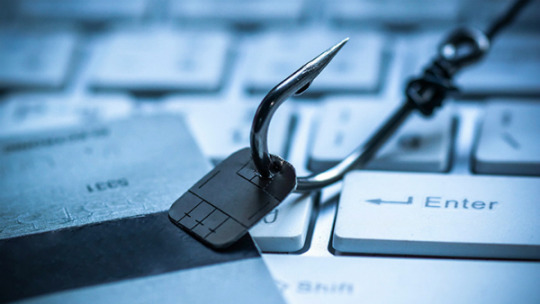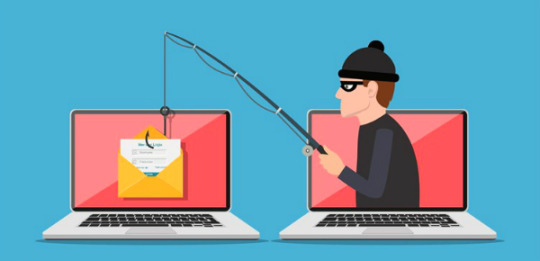Text
Ways to Avoid Phishing Scams
Phishing scams are situations created by identity thieves where they pretend to already know some information about you in order to gain access to your personal information. For example, you might receive an email or instant message that appears to be from your bank or lender.
This individual will ask you to confirm your bank account number or other sensitive information - sometimes threatening negative consequences if you don't do so immediately. Even though refusing to give out this information is your best defense, millions of people get fooled every year by these scams.

How Phishing Scams Work
The key to running a phishing scam is creating a replica of a secure website that's good enough to fool most people. With the classiest fakes, every link goes to the real site. Well, every link except the one that submits your username and password to the perpetrators. As icing on the cake, the fraudsters may try to create a URL that looks at least a little bit legitimate. Instead of paypal.com, perhaps pyapal.com, or paypal.security.reset.com.
However, not every phishing page is well done. Some use the wrong colors or otherwise fail to match the page they imitate. Others have totally unconvincing URLs, things like admin.dentistry.com/forms, or X8el87.journal.com. Even these lame frauds can pick up a few suckers, apparently, or the fraudsters would give up.
When you enter your username and password on a fraudulent site, the fraudsters gain full access to your account. To keep you from realizing you've been scammed, they may pass the credentials along to the real site, so it looks like you logged in normally. Your only clue may come when you find that your bank account is empty, or that you can't log into your email, and your friends say they're getting spam from you. So how do you armor yourself against this kind of attack?...to know more, visit - PCMag.

Keep Informed About Phishing Techniques
New phishing scams are being developed all the time. Without staying on top of these new phishing techniques, you could inadvertently fall prey to one. Keep your eyes peeled for news about new phishing scams. By finding out about them as early as possible, you will be at much lower risk of getting snared by one. For IT administrators, ongoing security awareness training and simulated phishing for all users is highly recommended in keeping security top of mind throughout the organization.
Think Before You Click!
It’s fine to click on links when you’re on trusted sites. Clicking on links that appear in random emails and instant messages, however, isn’t such a smart move. Hover over links that you are unsure of before clicking on them. Do they lead where they are supposed to lead? A phishing email may claim to be from a legitimate company and when you click the link to the website, it may look exactly like the real website. The email may ask you to fill in the information but the email may not contain your name. Most phishing emails will start with “Dear Customer” so you should be alert when you come across these emails. When in doubt, go directly to the source rather than clicking a potentially dangerous link...visit - phishing.org to know more.

Protect your Personal Information:
To protect yourself from falling victim to a phishing scam, it's important to be very cautious with your personal information including your usernames and passwords.
Some phishing scams divert you to a fraudulent website designed to look like your bank's website or a similar trusted source.
When you enter your username/password and other information, that information is transmitted to the con artist, who can abuse it later on.
Know the Common Phishing Language:
Look out for common phishing language in emails like "Verify your account."
Legitimate businesses will not send you an email to ask for your login information or sensitive personal information.
Also, look out for emails that try to convey a sense of urgency.
Warnings that your account has been compromised, for example, are a common way to lure victims. Again, contact the company directly to inquire about such emails rather than using any link or other contact information provided in the email.
Finally, be wary of any email that does not address you directly.
While some phishing scams will use your name in the email, many are sent out as spam messages to thousands at a time.
Most legitimate businesses will use your first and/or last name in all communication.
Go to - Comodo to know more.

Configure your spam filter for maximum effectiveness
Check the security settings on your email account to make sure any emails that are likely to be phishing attempts never reach your inbox.
With tight security settings, you may find that some emails you actually need end up getting sent to your spam or junk folder. Make a habit of white-listing important email addresses, such as those related to work, school, or bills.
Creating labels and filters can also help you organize your email and ensure nothing important falls into spam.
Set up robust antivirus protection
If you don't have antivirus protection on your computer, download something as soon as possible. Many antivirus programs require either a subscription or a one-time payment. However, there are some available for free that are sufficient for the average user.
Once your antivirus program is installed, download all updates as soon as they're available. The easiest way to do this is to configure your settings so that updates download automatically.
This and more info over at - wikiHow.
You may not be able to prevent phishing attacks from coming your way, but you can at least stop them from making you their victim. Know more about phishing attacks and how to prevent yourself from getting phished.
1 note
·
View note